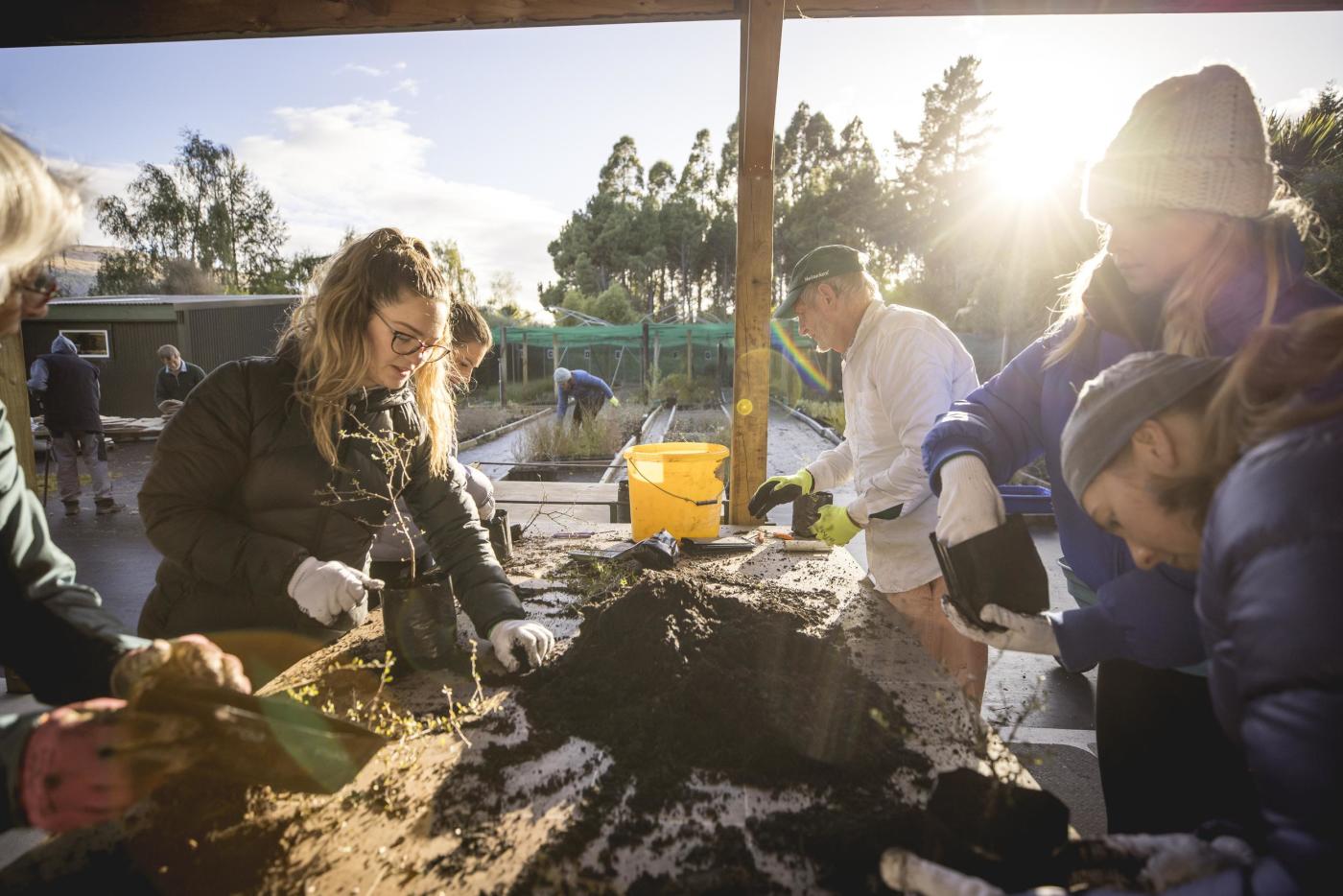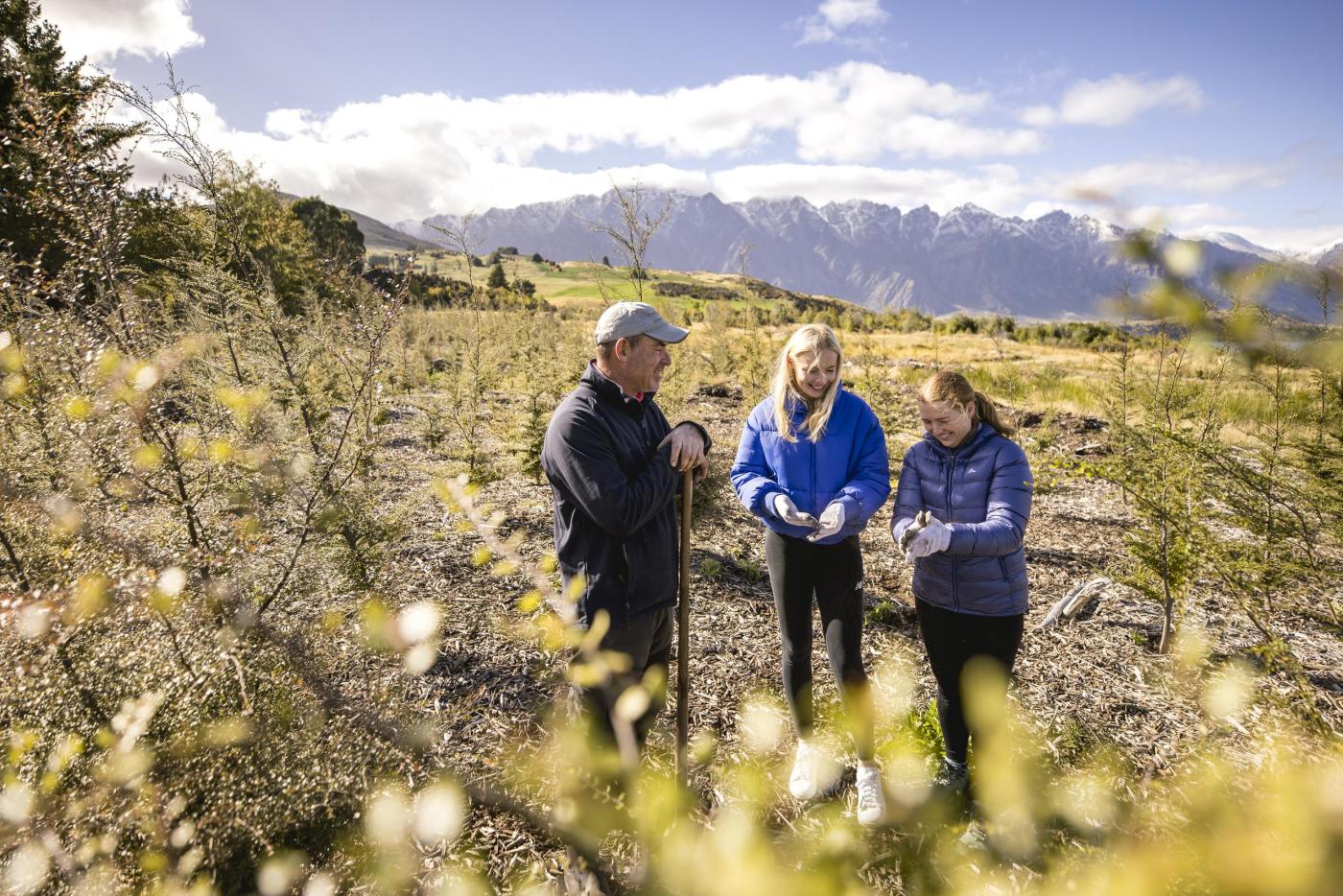What started out as an idea between two old friends – Neill Simpson, founding trustee and current Chair, and Peter Willsman, founding chair of the Whakatipu Wilding Conifer Control Group – has grown into a decade of passionate community volunteer work to restore native biodiversity in the Whakatipu Basin.
Whakatipu Reforestation Trust (WRT) was formally established with a purpose-built nursery officially open and their first volunteer potting session held on 19 March 2014.
“We’ve lost over 90% of indigenous vegetation in the Whakatipu Basin”, explains Karen O’Donahoo, Operations Manager, “this has all kinds of adverse effects on the land and wildlife. By planting on pockets of public land, we’re aiming to establish an ecological corridor that provides food and shelter for native birds and wildlife – and we involve the community every step of the way.”
WRT’s vision is to protect and restore the native biodiversity of the Whakatipu Basin through revegetation projects, collaboration, education, and advocacy.
 Jean Malpas Community Nursery, Whakatipu Reforestation Trust. Image: Miles Holden.
Jean Malpas Community Nursery, Whakatipu Reforestation Trust. Image: Miles Holden.
In the past decade WRT has certainly brought their vision to life with over 80,828 native trees and shrubs grown and planted at 70 different planting sites around the basin. Over 30,000 hours of volunteer work has been recorded since 2014 – the equivalent of 14 full-time working years. This includes recent community planting days in collaboration with Love Queenstown on Slope Hill Reserve.
“It’s incredible to look at how far we’ve come from a chat about replacing fallen conifers with beech trees,” Karen reflects. “The very first native plants were grown in Neill and Barb Simpson’s vegetable garden, and now volunteers are growing over 10,000 plants a year in a purpose-built nursery. We had 120 people turn up to a community planting day last year! Our most recent highlight is of course the huge grant we received from the Hilton Global Foundation to plant 22,000 trees at Slope Hill Reserve. This is landscape-scale change that we can only achieve by collaborating with other groups.”
 Jardine Park, Kelvin Heights, Whakatipu Reforestation Trust. Image: Miles Holden.
Jardine Park, Kelvin Heights, Whakatipu Reforestation Trust. Image: Miles Holden.
On top of putting plants in the ground, WRT is nurturing future guardians through their Educate for Nature programmes. The programmes teach children and adults the basics on how to grow native plants from seeds and cuttings and educate them on important environmental topics through sessions with guest speakers.
“Involving young people has always been central to our work. They learn fast. We want them to engage with the challenges faced by our native ecosystems but also have the knowledge and practical skills to protect our unique environment in the future,” says Karen.
Get Involved
Whether you have lived in the Whakatipu Basin all your life, or you are visiting for a short time, there are ways for you to help support and give back.
Find upcoming community tree planting events and other volunteering opportunities at Love Queenstown’s volunteer hub.
Whakatipu Reforestation Trust’s website is filled with great resources including information on the Whakatipu Basin’s native ecosystems, Whakatipu planting and species guides, and plant hunt sheets for taking a closer look at the plants on three of Queenstown’s favourite short walks.
“Understanding native ecosystems is so important for connecting people to place. When someone helps at the nursery potting mingimingi (Coprosma propinqua) for example, they might learn that it’s tiny leaves and twiggy branches help it to survive the temperature extremes here or that native birds feed on its purple berries. On a field trip, they might identify the plant in the wild and see for themselves how fruit-feeding birds disperse the seeds and establish new plant populations as a result.” - Karen O’Donahoo, Operations Manager
